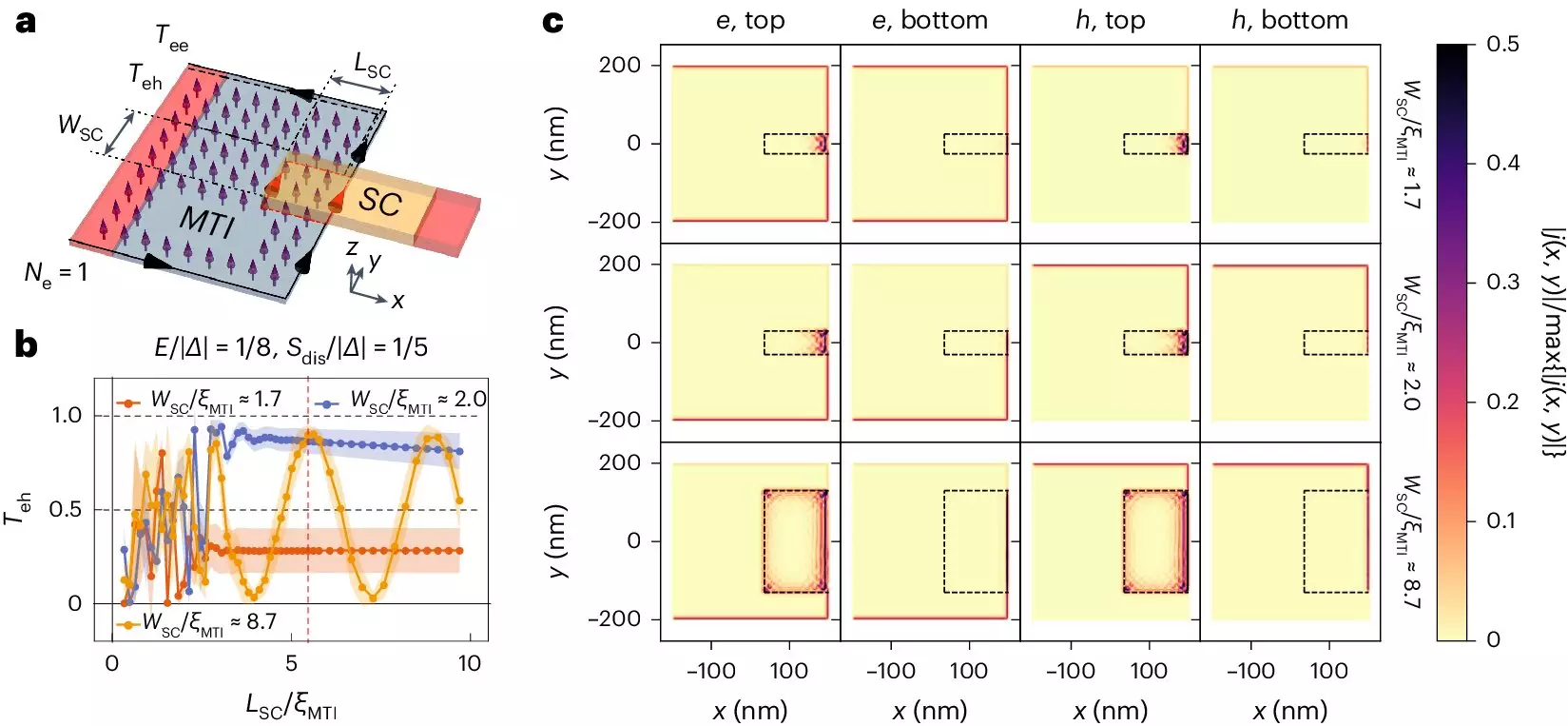In a recent study published in Nature Physics, a team of experimental physicists from the University of Cologne has made a groundbreaking discovery. They have successfully induced superconducting effects in materials with unique edge-only electrical properties, leading to the creation of topologically protected particles known as Majorana fermions. This discovery has significant implications for the development of stable and efficient quantum computers.
Superconductivity is a phenomenon where electricity can flow without any resistance in certain materials. On the other hand, the quantum anomalous Hall effect causes zero resistance, but it is localized at the edges of the material rather than being spread throughout. The combination of superconductivity and the quantum anomalous Hall effect can potentially give rise to Majorana fermions, which are crucial for advanced quantum states necessary for quantum computing technologies.
The researchers used thin films of quantum anomalous Hall insulator and a superconducting Niobium electrode to induce superconducting correlations at the edges of the material. Through their experiments, they were able to observe chiral Majorana states, a special type of Majorana fermions, which are key to realizing topologically protected “flying qubits.” This achievement, known as crossed Andreev reflection, allowed them to detect the induced superconductivity in the topological edge state.
The success of this experiment can be attributed to the meticulous care taken in the film deposition of the quantum anomalous Hall insulator, device fabrication, and ultra-low-temperature measurements, all conducted within the same laboratory. This integrated approach played a crucial role in achieving the desired outcomes that had previously eluded other research groups.
The researchers collaborated with colleagues from various institutions such as KU Leuven, the University of Basel, and Forschungszentrum Jülich. The joint efforts within the Cluster of Excellence Matter and Light for Quantum Computing (ML4Q) provided the necessary support and resources for this breakthrough discovery. The next steps involve further experiments to confirm the emergence of chiral Majorana fermions and to explore their exotic properties. By harnessing topological superconductivity and chiral Majorana edge states, the researchers aim to revolutionize quantum computing by developing stable qubits that are less prone to decoherence and information loss.
The advancement in creating superconducting effects in quantum anomalous Hall insulators marks a significant milestone in the field of quantum computing. The potential to harness topologically protected particles like Majorana fermions opens up new possibilities for developing more robust and scalable quantum computers. This breakthrough paves the way for future research endeavors aimed at unlocking the full potential of quantum technologies.


Leave a Reply